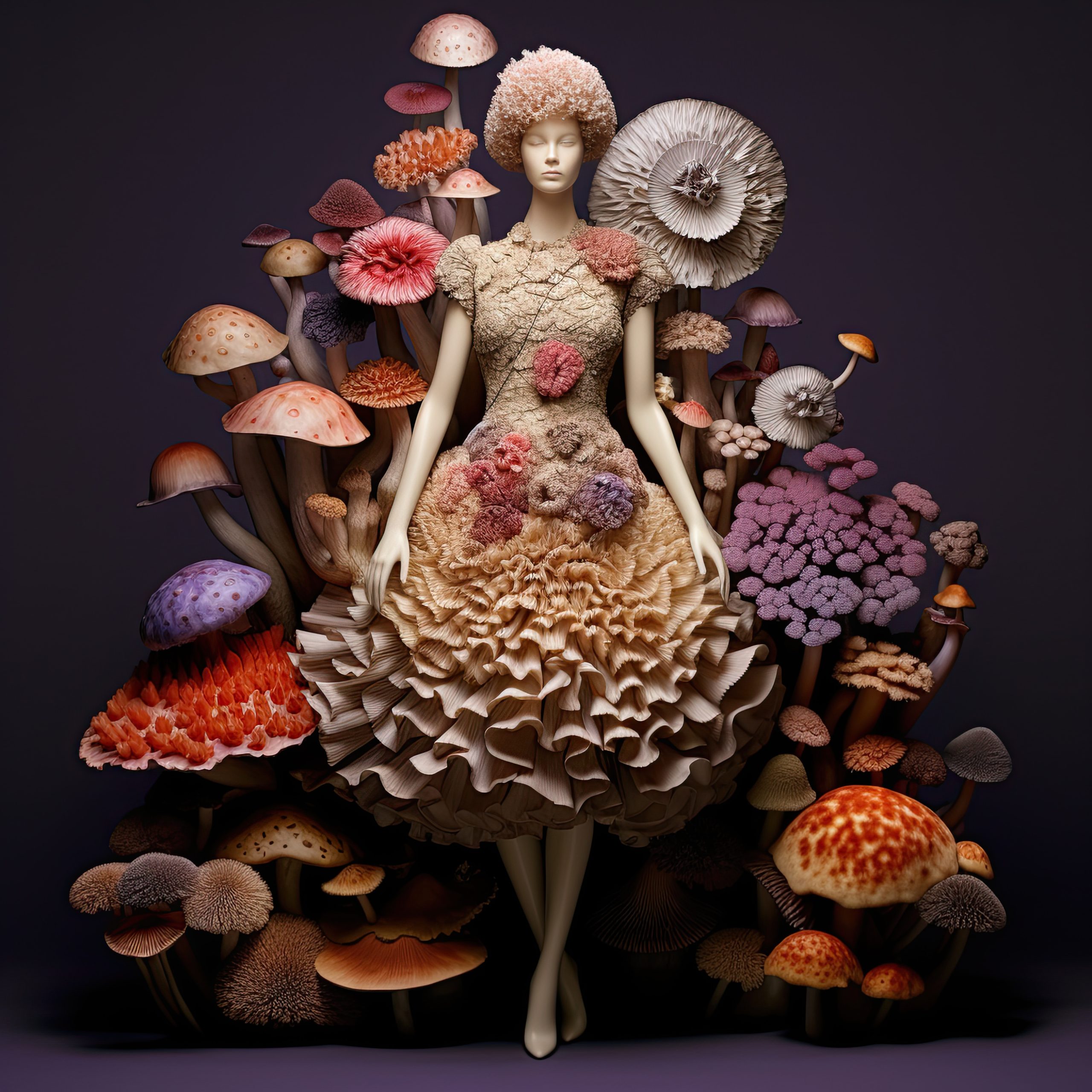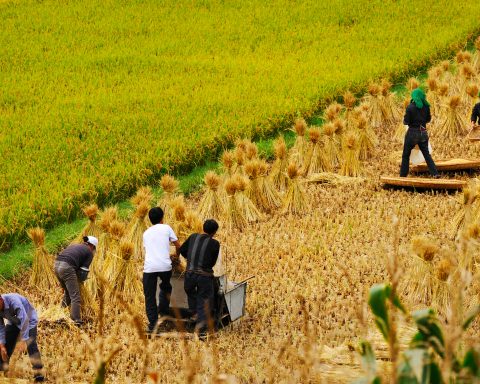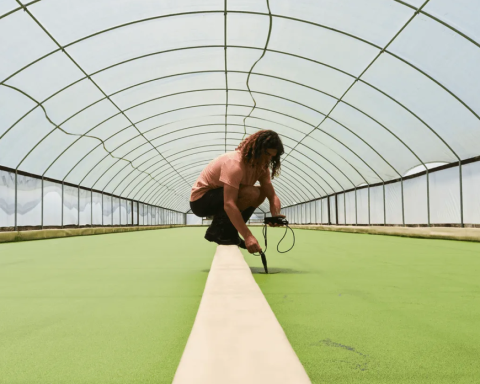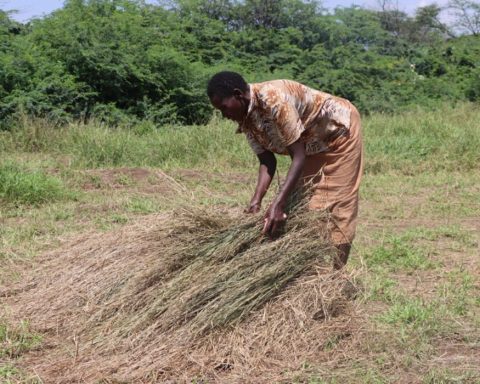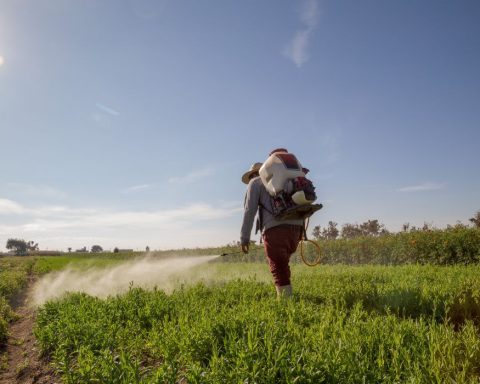Stephanie Lipp discovered the power – literally – of mushrooms by accident.
Four years ago, she and her partner, Leo Gillis, moved from Ontario to rural Newfoundland with the intention of starting their own mushroom farm to provide fresh local produce to food-insecure communities. The two experimented with using grow bags – plastic bags with air patches that can help plants germinate and root quickly – for the mushrooms. But it wasn’t working.
One day, Gillis thought he’d just crumple a bag and run it over with the lawnmower in the couple’s backyard, to put the mushroom nutrients into the soil. Instead, the mushroom’s root system “almost broke his lawnmower.”
The pair had discovered the tensile strength of mushrooms and decided to pivot. Within three months they had their first postage-stamp-sized sample piece of flexible material made out of just the root system of fungi, or mycelium. Two years later, their start-up, MycoFutures North Atlantic, is working on large-scale production of a mushroom fabric akin to leather or suede, but without the same environmental concerns.
Lipp and Gillis soon found themselves part of a quietly booming mushroom cleantech and wellness economy. “For many . . . mushrooms signify the future,” Lipp says.
Sprouting mushroom innovations
From the zombie fungus in The Last of Us to Netflix’s popular Fantastic Fungi doc, mushrooms are getting their moment in the sun. We’ve seen investors pour money into psychedelic mushroom start-ups recently, looking to harness their therapeutic potential. But non-magic mushrooms are having a moment, too.
Even the federal government is dabbling in part of the conventional mushroom economy. Last spring, as part of the Canadian Agricultural Partnership, the feds announced an investment of up to $340,000 in Mushrooms Canada to “seize new market opportunities.”
According to Mushrooms Canada, in 2021 Canada ranked second globally (behind Poland) in the value of fresh- or chilled-mushroom exports. Overall, Canada is the eighth-largest mushroom producer in the world; it exports most of that to the U.S., the fourth-largest mushroom producer globally, where mushroom sales brought in more than US$1 billion last year. In total, the mushroom sector is worth more than US$50 billion.
One of the biggest uses of mushrooms (outside of the fresh-food market) is in the wellness industry. Some estimates show that the functional mushroom (meaning mushrooms that advocates say offer health benefits in addition to their nutritional benefits) market hit US$15.3 billion in 2022 and will top $23 billion by 2030. Mushrooms such as shiitake have anti-inflammatory properties and are frequently used in skincare products.

Then there are the mushroom nutraceuticals, or supplements, where reishi, lion’s mane and maitake mushrooms are used to support cognitive health and lower blood sugar levels and inflammation in the body. Food scientists like those at Chinova Bioworks in New Brunswick are making mushroom-based preservatives. Researchers at the University of Manitoba, Stanford University and New York’s Columbia University are looking to capitalize on the same strength that Lipp and her partner found when they nearly broke the lawnmower to make building materials that are twice as strong as concrete. The U.K.-based start-up Biohm is already using mycelium root systems to make net-zero building insulation without petrochemicals.
Like Lipp, luxury retailers such as Hermès, Balenciaga, Mercedes-Benz and Stella McCartney are also experimenting with mushroom-based leather. With MycoFutures, Lipp’s goal is to make mushrooms accessible for customers looking for affordable, sustainable, bio-based materials and to inspire consumers to think more about the materials they use. “It’s a really valuable lesson for thinking about how we can use our resources more efficiently and in cooperation with what’s around us,” Lipp says. The chemicals used to tan leather are responsible for polluting waterways around the globe, and many leather suppliers have been linked to deforestation. Pleather is not a great alternative either, as it’s just another word for plastic.
MycoFutures is currently in the research and development phase, as Lipp and Gillis find the right balance of moisture in the fabric so that it doesn’t get brittle but is still permeable for needles and fabrication into jewellery, handbags and perhaps furniture. Because they use the root system of the mushrooms, Lipp is also experimenting with growing conditions and beds to create bigger sheets of fabric. “We’re trying to create a dense mat of biomass,” she says.
The next task is experimenting with coatings, dyes and longevity, testing how the mycelium will wear and last, against materials like leather. “If I have a wallet, I don’t want it for a week,” she says. “I want it for a year, two years, five years.”

Wake up and smell the shrooms
While a full mushroom-based wardrobe might be a few years away, mushroom coffee is taking over mugs everywhere, right now. California-based MUD\WTR, which makes a coffee alternative, has grown to a national company, with its products sold in all 50 states, and some high-profile funders, including Alumni Ventures. MUD\WTR CEO Shane Heath created the drink mix when he was experimenting with recipes to give him that morning jolt without the jitters. He started with cacao and chai, and then turned to mushrooms.
“I heard about lion’s mane and its benefits for the mind, cordyceps and its benefits for physical performance, and chaga and reishi for immune support and stress, so I would start my day by mixing together a mug with all of these amazing ingredients,” Heath says via email. Chaga and reishi fungi are both found in forested areas, while cordyceps is a fungus found on insect larvae, like caterpillars. All three mushroom species are purported to have health benefits and have been used in Eastern medicine for centuries.
As more consumers become aware of the many mushrooms available to them, companies like MycoFutures and MUD\WTR have seen increased interest from consumers. Sohaib Qid, CEO of PureShrooms, a Canadian company also creating mushroom coffee, tea and supplements, says there’s a broader acceptance of their products and a “growing awareness of the potential benefits these fungi can offer.”
However, Qid says, as mushrooms get more popular, there have been changes in terms of supply. “We’ve noticed a surge in mushroom farms emerging throughout Canada. While this is a positive development for the industry, the pricing for fruiting body mushrooms in the domestic market remains less competitive compared to other sources in the U.S.,” he says in an email.
For MUD\WTR, expansion into international markets is on the horizon. “It’s an exciting time to be in . . . the mushroom space,” says Heath. “A rising tide raises all boats, and an increase in the popularity of mushrooms is a positive thing for everyone.”
Emily Baron Cadloff is a Halifax-based journalist. She often writes about pop culture, food and education.
